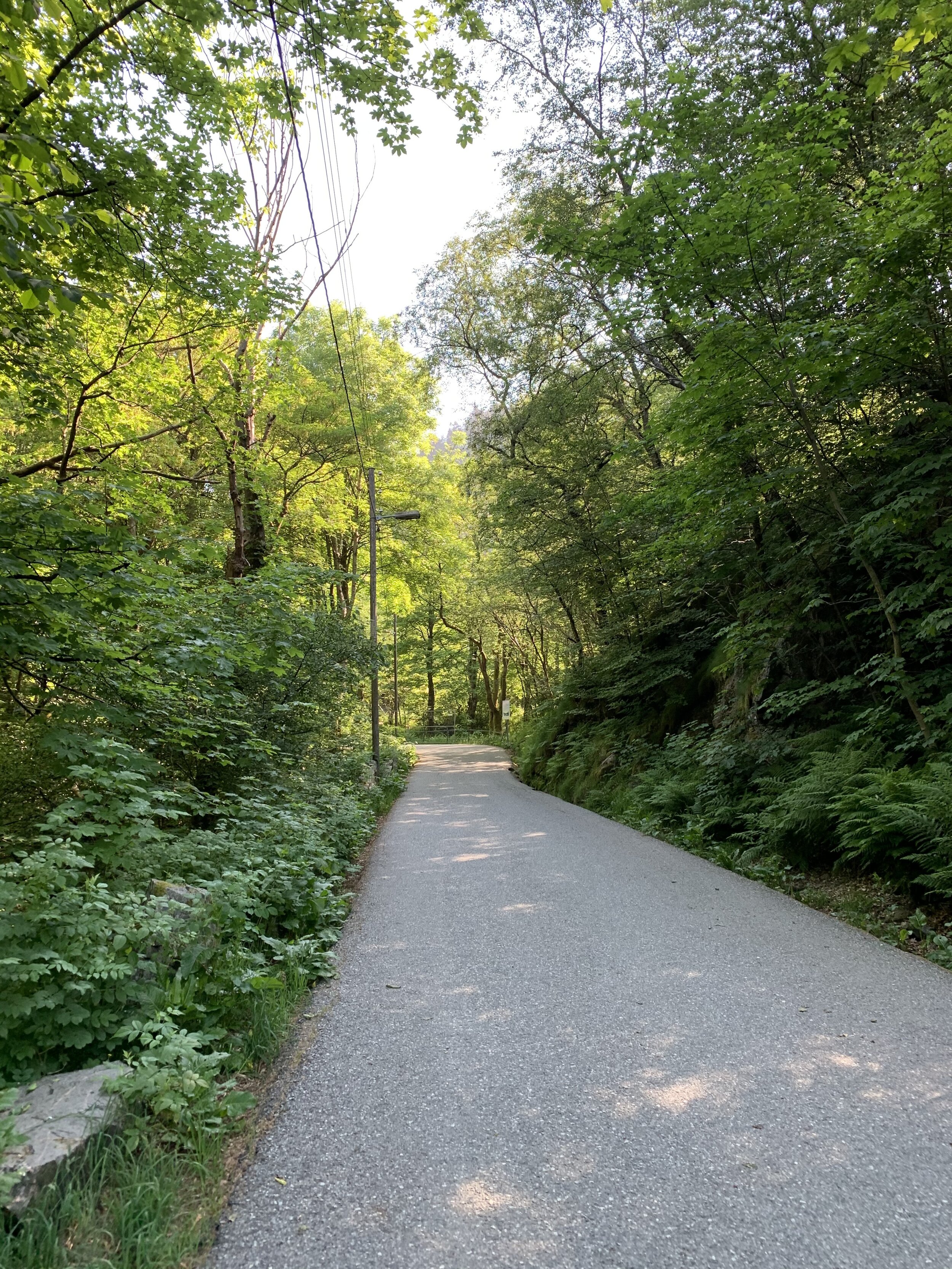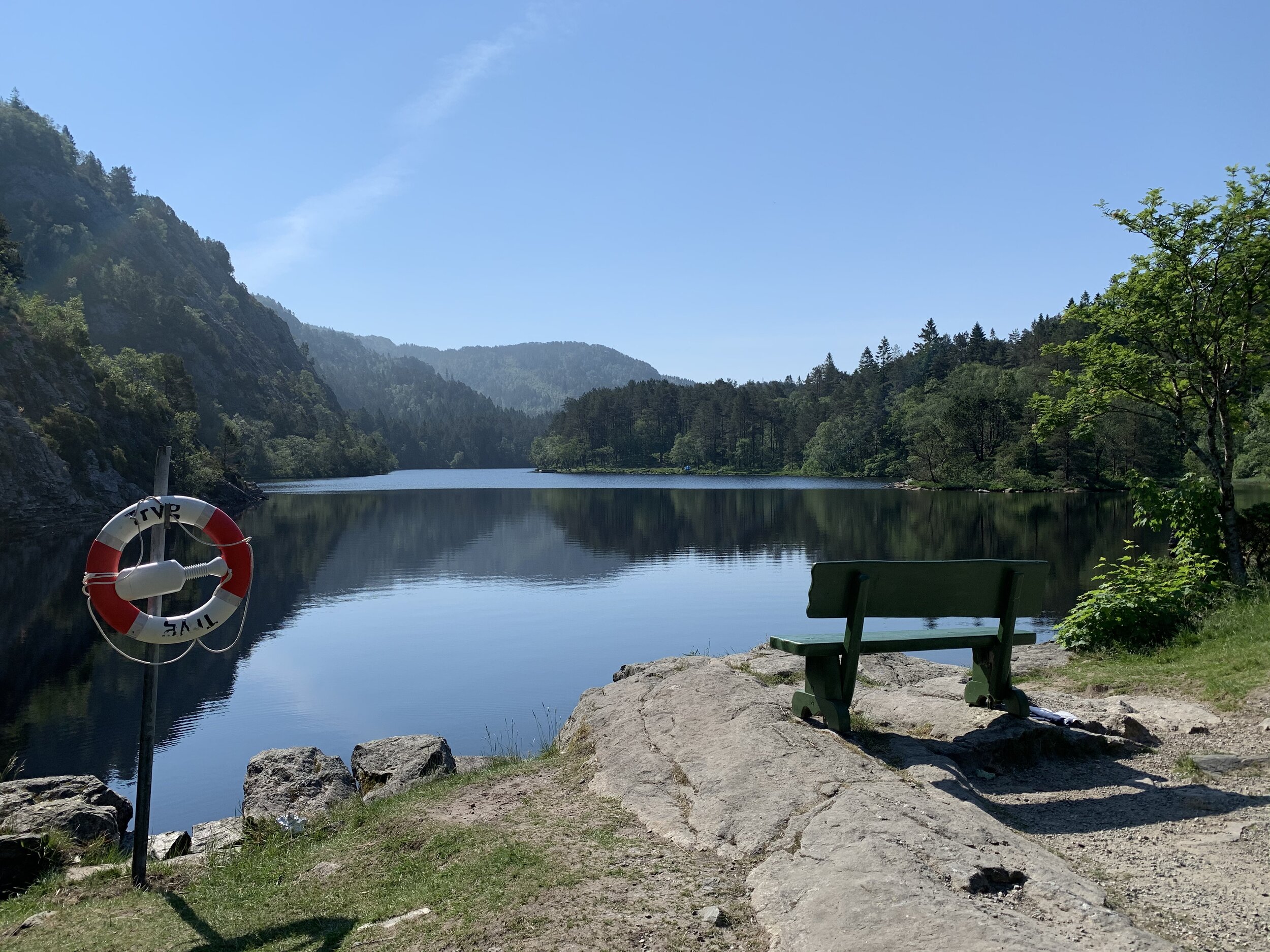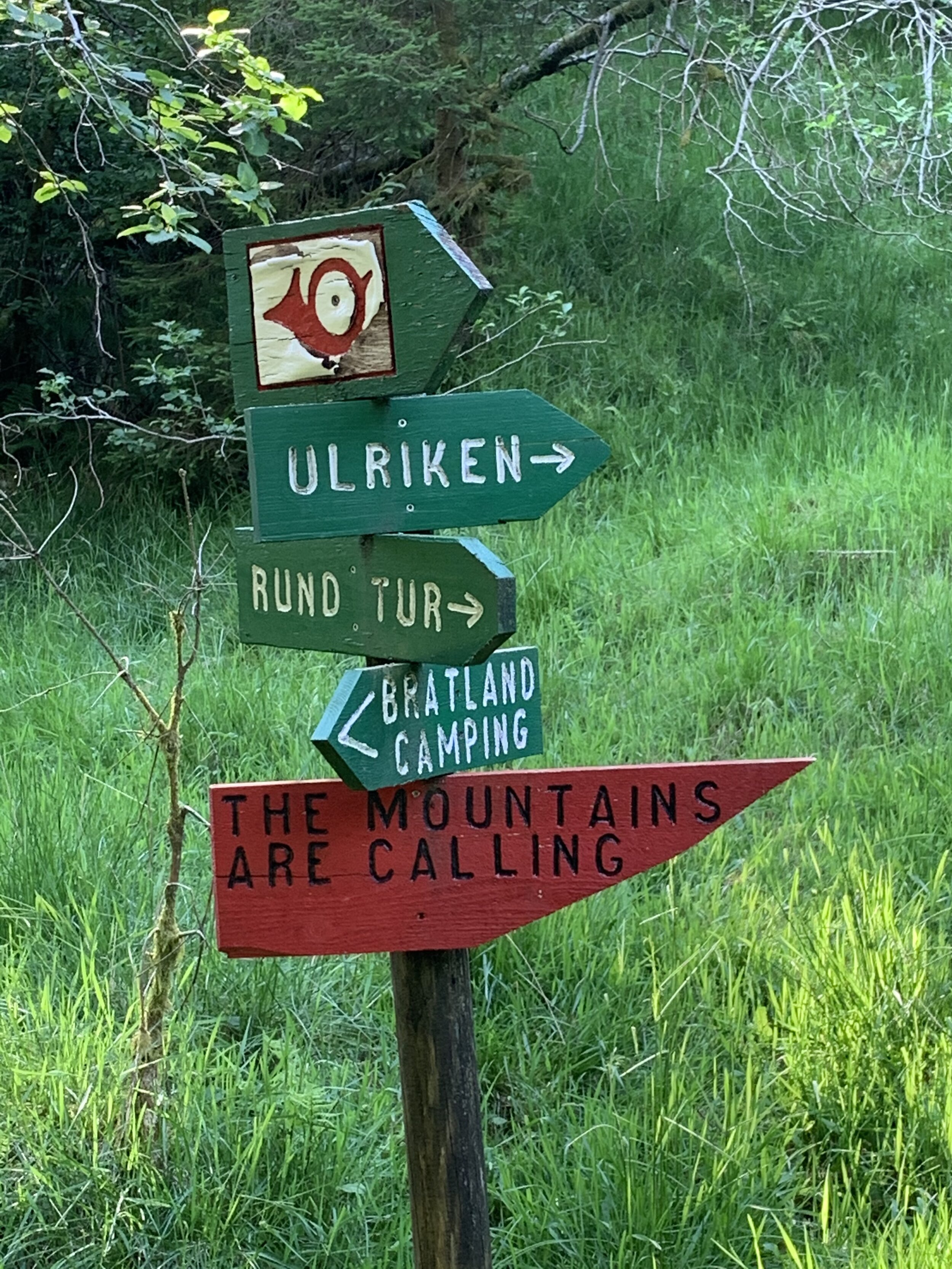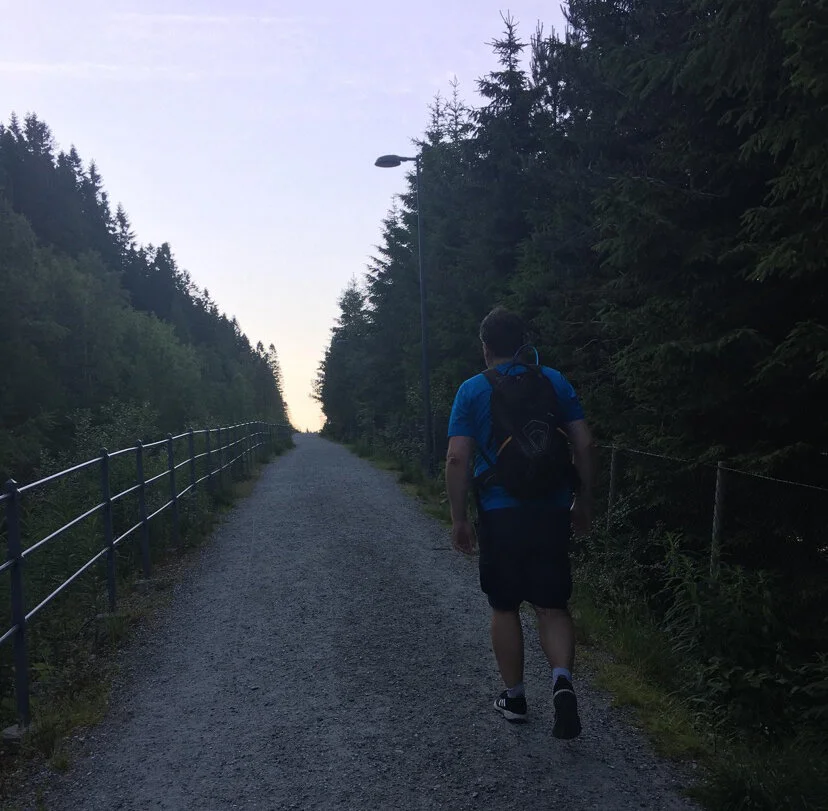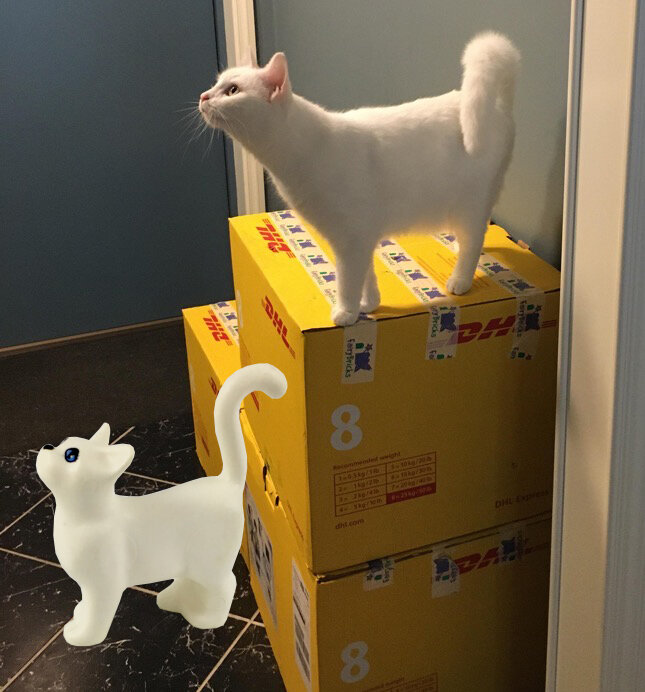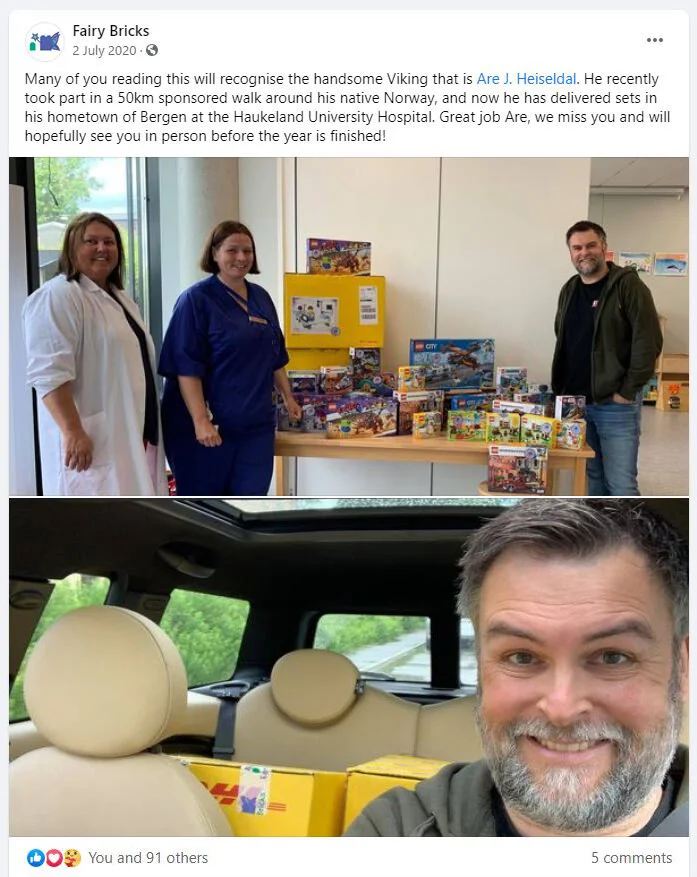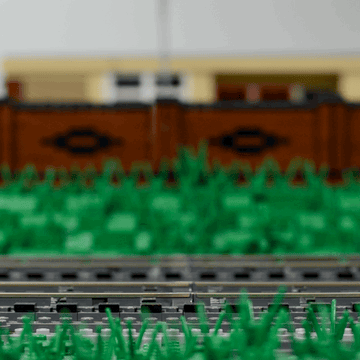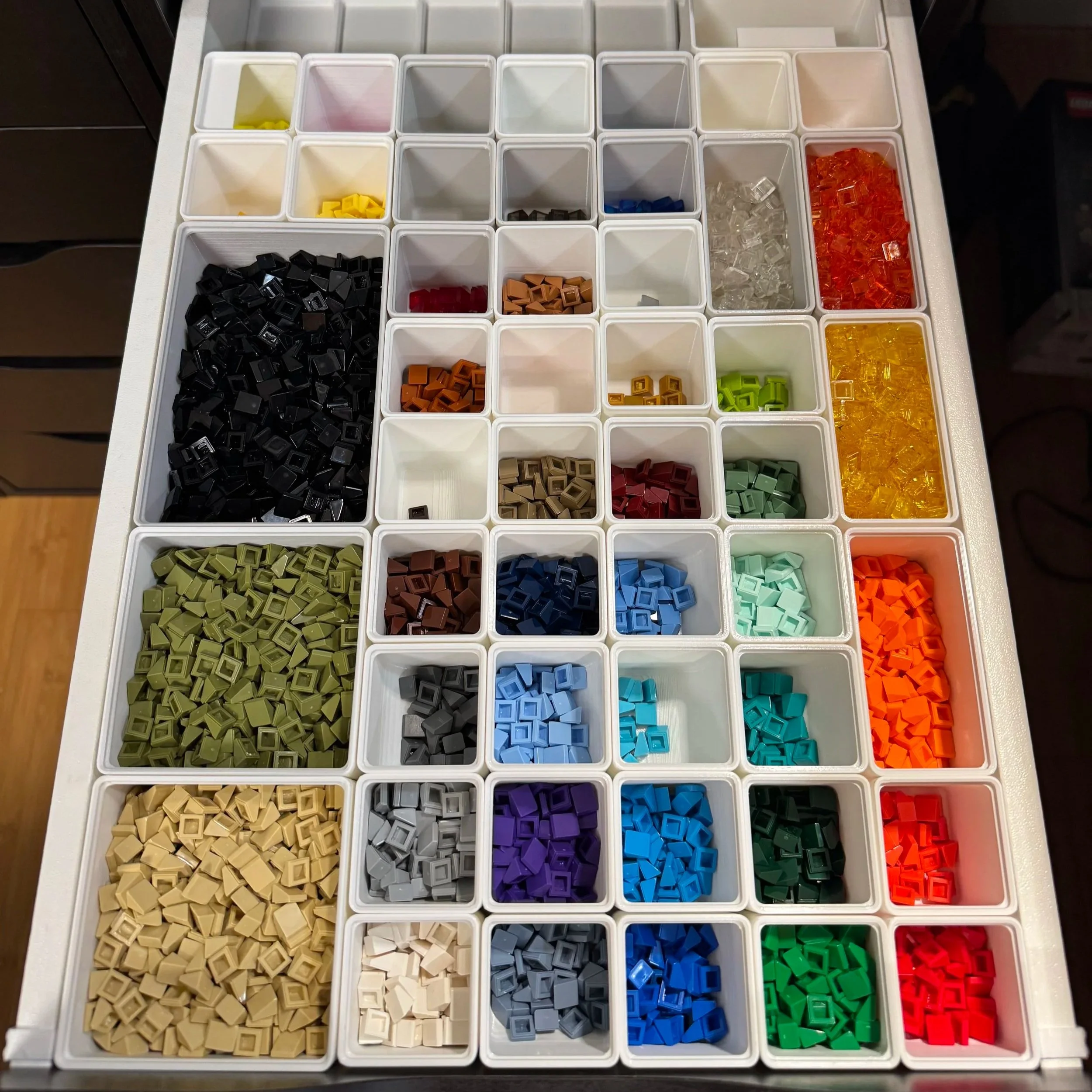Why I Walked 30 Miles Through Norway to Donate LEGO to a Hospital
/Best of BrickNerd - Article originally published February 12, 2021.
I didn’t quite expect temperatures of close to 30°C (86°F) when I decided to take a walk in the Norwegian summer…
Have you heard about Fairy Bricks? You should! But you’re forgiven if you haven’t, especially if you don’t live in Europe. Fairy Bricks is a UK-based charity that, in their own words “donates LEGO sets to children’s hospices and hospitals, brightening the lives of sick children in hospital.” Which is, I think we can all agree, a noble cause. Here’s a video explaining it even better.
Fairy Bricks is the brainchild—or, in this case, heartchild—of a guy I’m proud to call a good friend, Kevin Gascoigne. Known affectionately as “The Hairy Fairy” (why could that be?), his official job title is Chief Fairy at Fairy Bricks. Here’s an interview I did with him at the Paredes de Coura Fan Weekend in Portugal back in 2017 about the amazing work he does, published by our friends at Beyond the Brick (sorry about the initial bad sound quality, it gets better as the interview progresses):
As Kevin explains in the interview, the idea for the charity came after he held a raffle where 200 people from the LEGO community chipped in £1 each for a bunch of sets he had managed to get a bargain deal on. The money went towards charity, and when he repeated it the following year, the amount went up from £200 to £3,000, aided in part by a rare Mr. Gold minifigure that was donated by somebody generous in the community. That’s when he started to get phone calls from the UK Charity Commission and the UK Gambling Commission who wanted to know what he was doing, so in order to play by the rules, the Fairy Bricks charity was launched in 2014.
If you don’t watch the entire interview above (I don’t blame you, it’s 17 minutes long) you really should at least listen to Kevin talk about some of the experiences he’s had over the years working with Fairy Bricks. They are heart-breaking and heart-warming at the same time, and they touch on a seriousness and sadness that most of us LEGO fans don’t normally encounter in our hobby. Here’s a direct link to that part of the interview.
The Challenge
Anyway, you can imagine that for a charity that, to a large extent, raises money at public events, a global pandemic is devastating. So in June last year, Fairy Bricks posted this on their Facebook page:
The Facebook post that started the whole thing.
Fairy Bricks needed people to get sponsorships for doing something amazing to raise funds. I knew I wanted to help because it’s a really good cause. I’ve helped to deliver a donation to a Norwegian hospital in Trondheim before, and I know how much it’s appreciated and what it means to the children. Plus… I’m a sucker for exclusive items like the minifigure they offered, so this was a no-brainer!
The examples mentioned in the Facebook post, of somebody doing a half-marathon or cycling, inspired me. I hate running—always have—but I’m quite fond of walking, and I don’t mind doing it for hours. I needed a proper target, and I knew the longest walk I’d done in one stretch before was 32.7 km (20.3 miles for my international friends), so I decided a full 50 kilometres would be a good idea—that’s 31 miles to you non-metric people. Then, I could aim at raising £10 per kilometre, which would bring the total to £500 (just short of US $700) for charity—a nice sum of money.
50.5 kilometres, according to Google Maps, divided into five sections of similar length.
I then went on Google Maps to try to figure out a route that would be approximately the right length in the area surrounding my hometown of Bergen, Norway. I didn’t want to walk the same distance more than once, so I found a lap that seemed nice. Incidentally, I’d been wanting to walk that area before (but take the train back home), so this was a good opportunity to do the whole route. This map is what it looked like:
Note that “two hours, 13 minutes” the map shows is only for the first leg of the walk—Google estimated that the whole thing (50.5 kilometres) would take 10 to 11 hours without stops. I divided the route into five relatively similar sections and made sure there was a supermarket at every checkpoint so I could buy some food along the way and so I wouldn’t have to carry more than a couple of extra pairs of socks, a spare pair of shoes, a fresh T-shirt, some bandaids and a CamelBak full of water.
I then created a GoFundMe page for people to donate through. Ten days before the ordeal, I posted about it on Facebook, making it public so I couldn’t suddenly change my mind and spend the day on the couch instead. Incredibly, so many people responded to my challenge that I almost reached my aim of £500 before I actually started walking!
I knew I would need good shoes, and unfortunately, my sneakers were pretty much already worn out. So I splurged on a new set of Adidas shoes—the most expensive footwear I’ve ever bought—and went on a 20 kilometre test walk:
Yes, I know buying new shoes and test walking them two days before travelling 50 kilometres in them is not necessarily the best idea. But in this case, the shoes were just phenomenally comfortable and I felt like they were probably not going to give me any big trouble. The weather was incredible, and the forecast even better. Planning for a long walk in Norway in June could potentially be asking for trouble (or at least rain, wind and cold) but instead, it looked like I would have to take precautions not to overheat.
The Walking Begins
So, finally Thursday, June 18th arrived, and the forecast was remarkably accurate. There were some clouds in the morning but they disappeared soon after I set out just after 9 AM. I posted on Facebook right after I’d started, adding a link to a live tracker on Google Maps so people could actually follow me on my walk. You can see the public post here if you’re interested—it contains a lot of heart-warming cheering on by a lot of people, which was really nice to read along the way!
Me at 0 kilometres, about to set off on the longest walk of my life. All for a good cause!
The first leg was relatively uneventful. The surface was mainly asphalt, but there was also some gravel and some beautiful sections on forest paths as I’d tried to stay away from main roads as much as possible. I arrived at the first supermarket feeling fresh and decided to press on through the second leg immediately after just having taken a picture to document the stop and spending a couple of minutes with my shoes off.
That was probably my biggest mistake of the whole trip because not long after that it started to get really, really hot (by Norwegian standards)—the temperature crept up towards 30°C (86°F) in the sunshine. I applied some more sunscreen, but because I hadn’t stopped to refill my CamelBak, I ran out of water in a pretty remote area about an hour before my next checkpoint, so that was quite exhausting. Still, the views were very nice:
I had lunch at my next checkpoint which consisted of a couple of bread rolls and bananas plus a Coca-Cola Zero (and I made sure to refill the water pouch). Then I swapped my new shoes for a pair of walking sandals, just to get some change, and set off towards the town of Arna—the half-way spot of my journey. This meant I had to walk along a relatively long fjord, seeing Arna in the distance for a long time before I actually reached it. But the scenery still made it easier, and I couldn’t really complain about the weather, either.
The train station in Arna, marking the half-way point at roughly 25 kilometres. Just a liiiiittle bit further to go!
Halfway There & Halfway to Go
Just after the half-way mark, however, things started to get really hot. This segment took me across some open stretches of land where there was simply no shade to be found—that’s where the header image for this post is taken with my tongue out. Luckily, I had enough water so I could make up for all the sweating—or I would certainly have experienced major headaches. I also passed a milestone, 32.8 kilometres, so everything after that would add to my earlier personal 24-hour best!
At the third stop I put my new walking shoes back on—by now my soles were starting to hurt a bit, which was no big surprise as most of the past two sections consisted almost exclusively of asphalt. At least they hurt in different places than they did before I swapped footwear! I bought some peanuts to keep up my salt levels and a can of proper, sugar-filled Coke, ate an energy bar, and set off again.
I had seen on Google Maps that the fourth section had a substantial stretch of a busy and narrow road without a walking path beside it, so I took a little detour to avoid that which led me onto a section of the old postal route between Bergen and Oslo. Thankfully it was a grassy walking path—a welcome change for my feet! But because it dates back to the time before anybody traveled with cars or even horse carts, these paths don’t really take elevation into consideration. Which meant that I did a fair bit of climbing—as a reward, I could enjoy some absolutely stunning scenery (yes, that is snow in the distance, in the third picture) and even some four-legged company:
(If you’re wondering: I turned left at the sign in the fourth picture, as I didn’t really feel I needed more altitude.)
It was 7 PM by the time I arrived at the final checkpoint. At this point, I’d been walking for almost ten hours, and I still had a fifth of the distance to go! I could feel a blister forming on my left foot which I didn’t like because it was only going to get worse before I got home—and if you start walking awkwardly because of something like that, suddenly your joints start to complain. But I was determined to make it. I had some proper dinner (lasagna, yum!) and then embarked on the final leg.
Walking 50 kilometres is a lot, but walking 50 kilometres alone arguably feels even longer. So to my great joy, my (then-)girlfriend (now wife) Karen had decided to surprise me by joining me for the last five kilometres or so! We finished together, and she took this picture of me towards the end of the journey, just as the sun was about to set:
Sooo close. This is about two kilometres from home on a path I’ve walked many times before—but never as tired as this.
You Have Arrived At Your Destination
I finally walked through the door back home at 9:45 PM, roughly twelve and a half hours after I started. My joints were aching and my soles have never felt so beaten up. But what an incredible feeling to have finished and managed to accomplish what I aimed for!
Shoes off! Excuse the underbelly…
Oversikt = overview, favoritter = favourites, rediger = edit, distanse = distance (duh!), skritt = steps, trapper gått = flights of stairs climbed, etasjer = floors. And that concludes today’s Norwegian lesson. Tomorrow we’ll deal with the so-called asthmatic confirmation. Ask me if you’re curious.
So what about the facts for the trip? According to my iPhone’s step counter, I walked a total of 51.5 kilometres (exactly 32 miles), took 71,684 steps, and climbed 225 floors. I also racked up 463 “likes” over the course of seven Facebook posts about my charity walk (gotta count those likes!).
I slept really well that night. That’s not very surprising.
What is surprising is the fact that I barely felt any pain whatsoever the next day. Sure, my soles were still a bit sore, and that blister was big and needed to be punctured, but apart from that, I recovered far quicker than I’d have thought. (As you can see from the pictures, I’m hardly an athlete, but I thought walking nine kilometres more than a marathon would be even worse than it was.) Maybe it being for a good cause helped…?
Why Walking Was Worth It
So, what else is there to say? If you’ve followed me through the literal equivalent of 50 kilometres, all the way down here, I’ll give you a break. Three things, firstly, how much money did I actually raise? The aim was £500, but the final amount I sent to Fairy Bricks was actually a whopping £1,363 (not least thanks to an extremely generous donation from a certain German, you know who you are!). That’s just short of US $2,000. Not too shabby for a day’s walk!
Secondly, I got a message from an old friend of mine, whose child actually received a Fairy Bricks set a couple of years ago. Translated into English, it said roughly this: “What a brilliant project. As a mother of a child who is a cancer survivor, it moves my heart to read about this because it really does brighten the day so much for those who are so lucky as to receive some of the stuff you’ve raised money for. I don’t think people really understand that. So on behalf of myself and others in a similar situation: THANK YOU SO MUCH for your effort.”
That really touched me—and so did the third thing: Kevin, the Chief Fairy, had followed all my updates along the way, and right after I came back home he messaged me telling me that while I’d been out walking he had packed three big boxes with a total of 87 LEGO sets that he’d ship to me so I could donate them to a local hospital. I totally didn’t expect that, but that of course made the whole experience so much concrete for me. So, less than two weeks later, these boxes arrived, much to the amusement of our recently adopted (deaf) cat Åsne (who is, incidentally, doing a near-perfect impersonation of the old LEGO Belville cat):
The cat in the lower corner is 20 years older than the one on top of the boxes. She’s aged gracefully, wouldn’t you agree?
I stuffed the boxes in the back of my Mini and drove to the children’s ward at the Haukeland University Hospital, Norway’s largest hospital in terms of number of patients, where I met up with some lovely people who thanked me for doing this. It’s such an incredible feeling to be able to give something to kids who really need their spirits to be lifted, even if (or maybe just because) their situation is close to hopeless. LEGO helps take their minds off the seriousness for a little while. And all I did to help facilitate something so wonderful was do a bit of walking!
From a selfish perspective, doing something like this makes you feel good. It really does. From a bigger perspective, what Kevin and the good people at Fairy Bricks are doing is making the world a better place through LEGO—not least to those children who really need it and to their parents and relatives who can see what it means to them.
There are several initiatives in the LEGO community that aim to give something back. Fairy Bricks is one, Child’s Play is another, and Creations for Charity runs from mid-October to the end of November every year. Each of these charities adds a bit of perspective to the LEGO hobby for me. Allow me to put it bluntly by sharing the back of the T-shirt Kevin wore at the Skærbæk Fan Weekend in Denmark in 2017:
Perspective. ‘Nuff said.
So go support a charity! You won’t regret it. And feel free to share your own stories about how you’ve used your LEGO hobby for the greater good in the comments below (I hope it takes up as much space as I’ve used in this article!). And... thank you for reading all the way to the end! I admire you. Want to go for a walk?
How have you used your LEGO hobby for the greater good? Leave your thoughts in the comments below.
Do you want to help BrickNerd continue publishing articles like this one? Become a top patron like Charlie Stephens, Marc & Liz Puleo, Paige Mueller, Rob Klingberg from Brickstuff, John & Joshua Hanlon from Beyond the Brick, Megan Lum, Andy Price, John A. and Lukas Kurth from StoneWars to show your support, get early access, exclusive swag and more.




